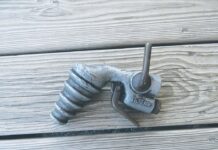The first of Henry Ford’s long anticipated farm tractors rolled off the Dearborn assembly line more than 90 years ago on Oct. 8, 1917. The first year’s production was sent to England to help with the war effort.
By April 4, 1919, Fordson tractors were being built in a new plant in Cork, Ireland, as well as at Dearborn, Mich.
No improvements
By 1921, Fordson tractors represented about half of the tractors sold in the United States. Henry Ford, however, adamantly refused to improve his tractor and, although he made more than 100,000 Fordsons during 1923, and again in 1925, the glory days of the crude little Fordson, with its iffy ignition and lack of a governor, were coming to an end in this country, signaled by the introduction, in 1924, of the all new Farmall row-crop tractor by International Harvester.
The end of production
In February 1928, the relentless competition offered by the International Harvester Co., and other manufacturers who jumped on the row-crop bandwagon, as well as assembly line preparations for the new Model A Ford car, forced the end of Fordson production after 739,977 Model F tractors had been built in the United States.
Fordson tractors continued to be built in Ireland and a new Model N with a more powerful engine, high tension magneto, and flyball governor was introduced in 1930. A new Ford plant was opened at Dagenham, England, and, by 1933, all Fordson production was concentrated there.
Optional PTO. In 1935, the Fordson was again improved, although the basic design was still from 1917, with an optional PTO, rubber tires and lights becoming available.
Although Henry Ford and Harry Ferguson shook hands and introduced the famous Ford-Ferguson 9N in the United States in mid-1939, England went to war with Germany in September of that year. This meant materials and machine tooling were dedicated to the war effort and there were none available to convert Ford’s Dagenham plant to production of the new 9N model.
Tractor manufacturer
By the time World War II started, Ford was the largest manufacturer of tractors in the United Kingdom and continued to build the venerable Model N throughout hostilities. As 1945 dawned and the war’s end approached, Dagenham’s Fordson N production line was about worn out and England was in dire need of a new, more modern tractor.
Ford of England and everyone else realized the Fordson N was obsolete, with its 1917 styling and 1930 engine and transmission.
Central PTO.The War Agricultural Committee declared that what was wanted was a 3-plow, row-crop tractor with high clearance and a central PTO. Ford was willing and anxious to build just such a machine, but engineering resources, tooling and money were virtually nonexistent, and the need for tractors was such that the Model N production line couldn’t be shut down in order to tool up for a new model.
So Ford compromised by using the old Fordson engine and three-speed transmission, along with a new final drive. In addition to a PTO, the new tractor also had individual turning brakes, as well as provisions for electric starting and for a 3-point hydraulic linkage.
Adjustable front axle
With tricycle-type tractors not being very popular in Great Britain, the new Fordson had an adjustable front axle, while the rear wheel width could be changed by reversing the wheel on the hub and varying the position of the rim in reference to the wheel.
In the spring of 1945, the new Fordson Major was introduced to tractor-starved British farmers. Ford gave it the designation E27N; E for English, 27 for 27 horsepower, and N for tractor. The old four-cylinder, side-valve engine with a 4.125 X 5 inch bore and stroke and splash lubrication was run at a higher RPM in order to provide enough additional horsepower to make the Major a 3-plow tractor.
Orange color scheme
Fordson Model N tractors had been painted dark blue with orange wheels until 1937, when an all-orange color scheme was adopted. However, the color was changed to dark green in 1941, in order to help hide the machines from being spotted by strafing enemy pilots.
With the German Luftwaffe virtually out of business by early 1945, the Major reverted to the more colorful pre-war Fordson blue with orange wheels. About the only concession Ford made to streamlining was to round off the front a little and hide the radiator behind a vertical bar grill.
Rugged
For all that, I’ve always thought the Major E27N was a rugged looking and attractive tractor, especially with the big, rounded headlights. More than 23,000 E27N’s were powered from new, or repowered, by Perkins diesel engines after Frank Perkins converted a Fordson Major for his own use.
Although plentiful in England (more than 233,000 were built between 1945 and 1952), few E27N’s found their way to the United States and are not often seen here.
I owned a 1951 Fordson Major for several years and it was an interesting tractor, although the right foot operated clutch and left foot operated turning brakes were a little difficult to get used to.
Unfortunately, my Major was destroyed when one of my barns burned many years ago. In 1951, a Fordson Major like the one I had would have cost 374 pounds, which would have been about $1,084 U.S.
In comparison, the price in pounds for the competition was: British-built Farmall M, 679 ($1,969); Ferguson TEF-20, 490 ($1,420); Nuffield Universal M4, 547 ($1,586); and a Massey-Harris 744D, 854 ($2,476).
Outdated tractor
So, while the Fordson Major was still an outdated tractor, it was significantly cheaper than anything else around, resulting in huge sales among thrifty British farmers.
An interesting blend of the old and the new, the stop gap Fordson Major E27N was built until 1952 when it was replaced by the Super Major E1A diesel, many of which were imported into the United States.












